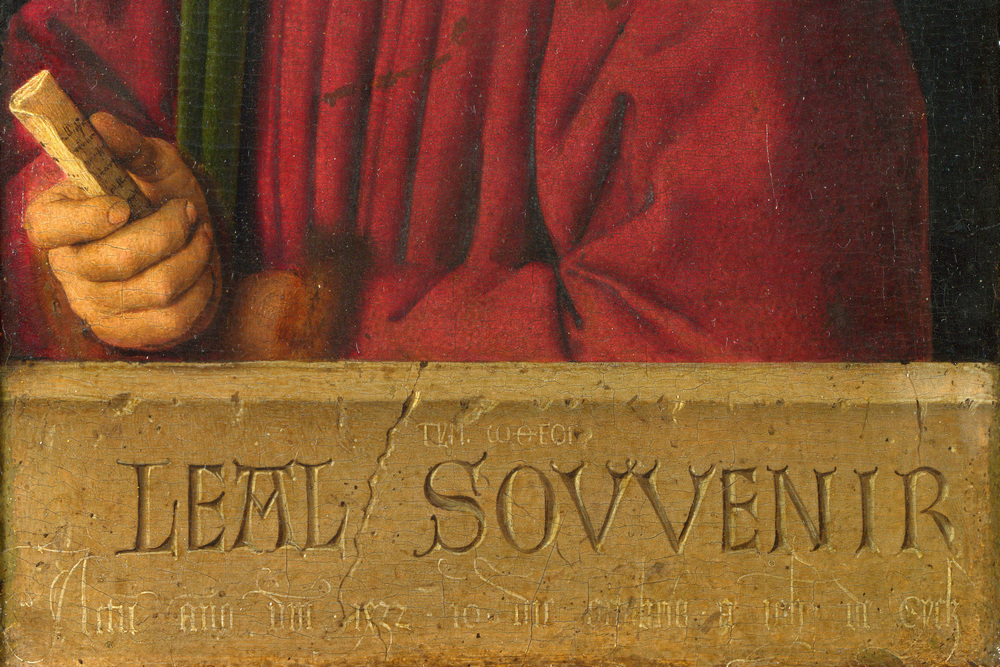Image, Script, and Death
Inscriptions on Painted Portraits in Medieval Europe and their Semantic Reference Systems
2019–2024
RFB04

© National Gallery, London
The portrait type that determines our current perception of this pictorial genre first took form in the 14th century: The depiction of a living person painted initially on an independent panel, and later on canvas. Many such portraits bear painted inscriptions that typically refer to the person depicted, although a significant number also refer thematically to memento mori and vanitas. Remarkably, these inscriptions often allude to forms of script and types of material beyond the matrices of wooden panel or canvas. They imitate, for instance, stone inscriptions or slips of parchment with manuscript texts that often deliberately reflect specific epigraphic traditions, notably traditions that correspond to the contents of the inscriptions themselves. For example, inscriptions and their formats often relate to the literary and formal conventions of epitaphs and sepulchral monuments. These connections demand study, and the painted portraits need to be analysed as a deliberate form of an image-text-system.
Considered across the full range of late medieval and early modern pictorial media (or better, image-text-media), the inscribed portrait is virtually unexplored as an independent area of historical research. Problems yet to be considered include: 1) the interaction and co-action of image and inscription; 2) the perception and awareness of “Inschriftlichkeit” (i.e. the semantic status of inscriptions as distinguished from other manifestations of script on a meta-level); 3) the authoritative character of the reference systems ‘inscription’ and ‘manuscript’ with their specific forms of script and materiality; and 4) the meaning of image and script with regard to the memoria of the living as it corresponds to those media that serve the memoria of the dead.
The project aims at a systematic compilation of relevant source material from the 14th to early 16th century in Europe, and following that an analysis of the semantic reference systems of ‘inscription’ and ‘manuscript’ in relation to the textual contents and the pictorial messages embodied in each example.
People
Project lead: Peter Schmidt
Research Associate: Jana Wolf
